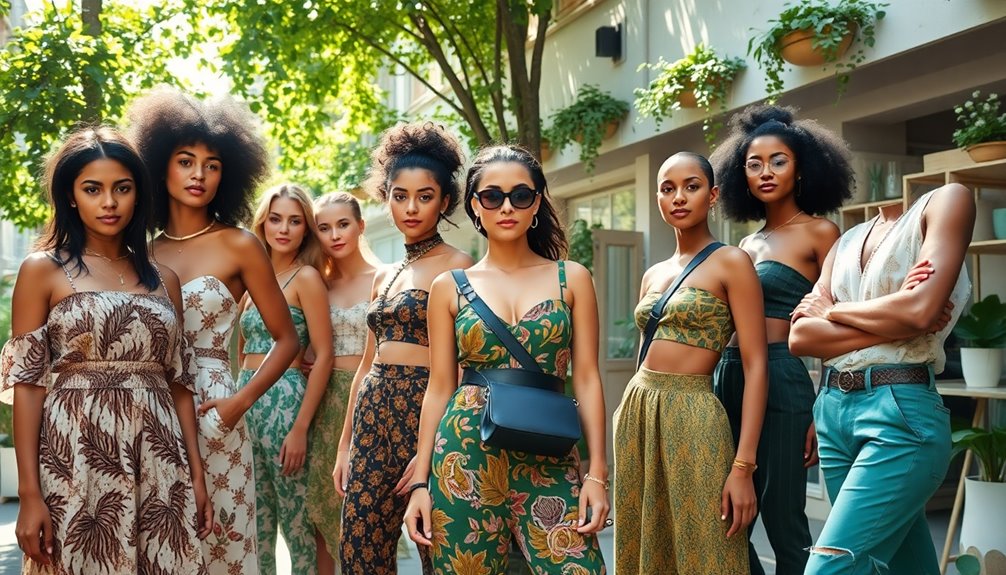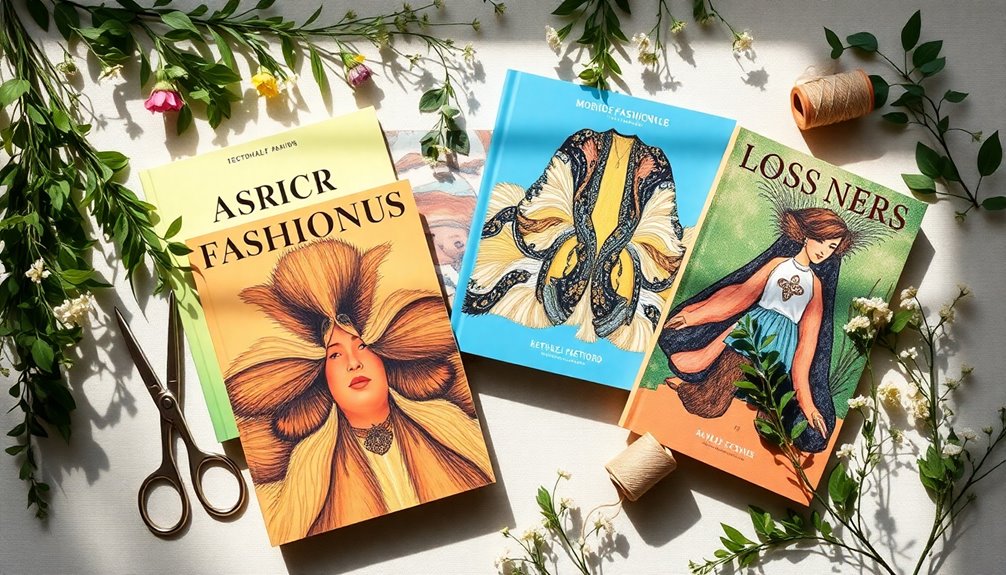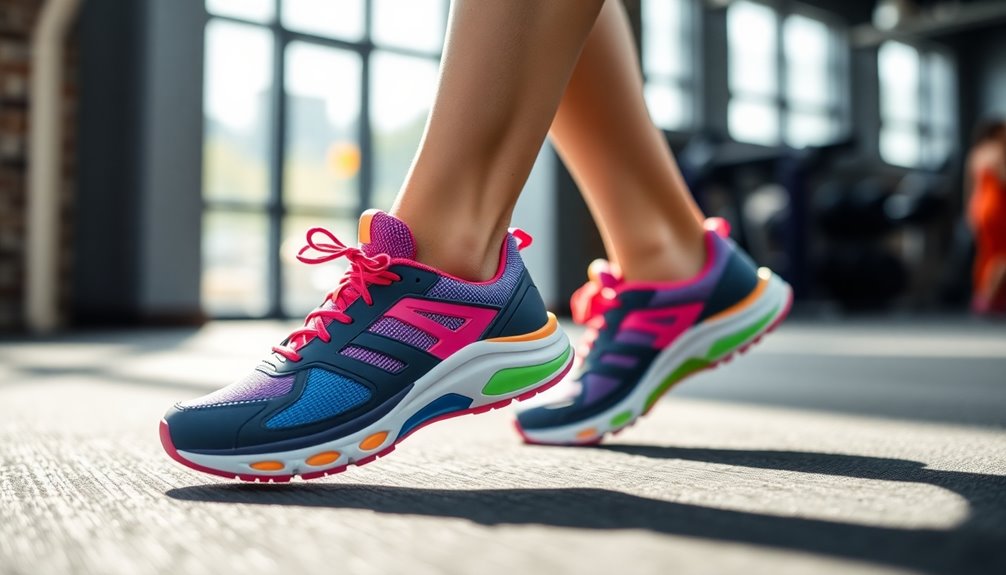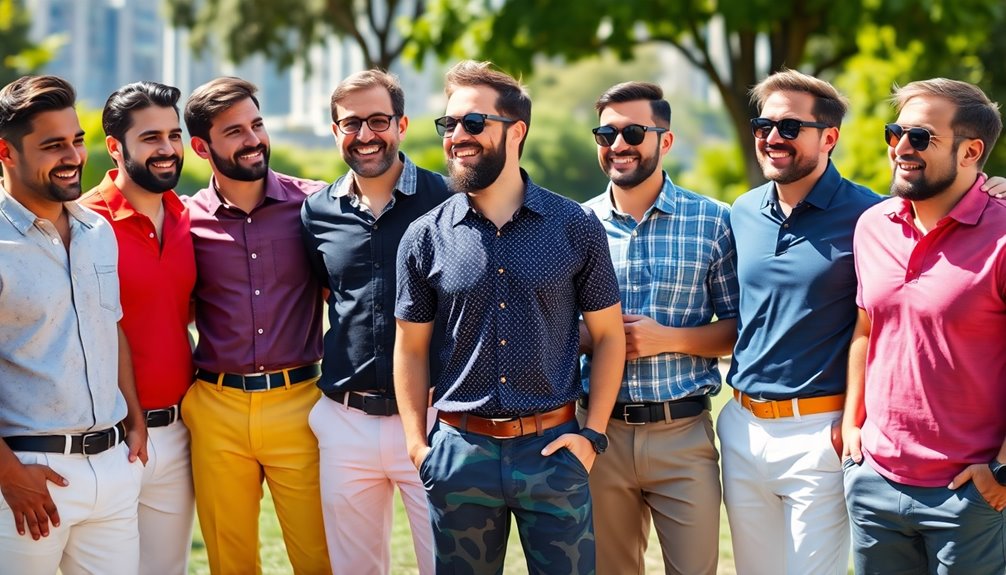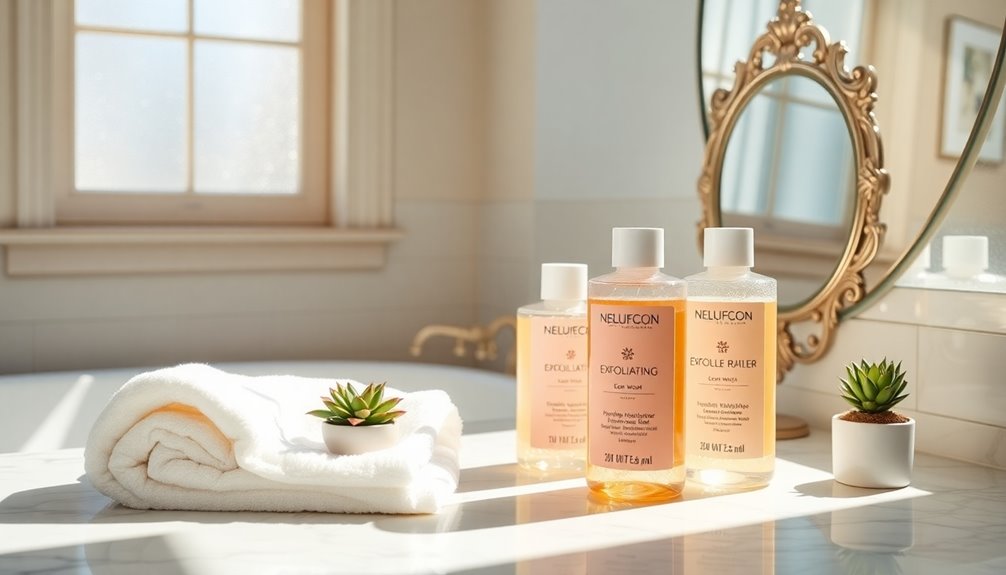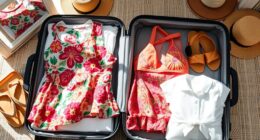If you’re curious about the cutting-edge sustainable fashion brands of 2025, you’re in for a treat. These brands prioritize eco-friendly materials, ethical production, and fair labor practices, which really resonate with the growing demand for transparency in fashion. From upcycled designs to innovative textiles, they’re not just reducing waste—they’re changing consumer habits. I’ve found that brands like Stella McCartney and Reformation stand out for their commitment to quality and sustainability. If you stick around, I’ll share an extensive list of 15 game-changing brands that’ll inspire your next conscious shopping spree!
Key Takeaways
- Renowned brands like Stella McCartney and Vivienne Westwood lead the sustainable fashion movement with innovative designs and ethical practices.
- Brands focusing on low-impact textiles, such as organic cotton and hemp, are becoming more prevalent in sustainable fashion.
- Upcycling and zero waste design techniques are increasingly adopted by brands to minimize waste and extend garment life cycles.
- Transparency in supply chains is a priority for emerging sustainable brands, fostering consumer trust and informed purchasing decisions.
- The rise of vintage and second-hand markets highlights shifting consumer behavior toward more sustainable and mindful fashion choices.
A Practical Guide to Sustainable Fashion (Basics Fashion Design)
If you’re a student at the A level or a high-ability GCSE learner looking to explore the world of sustainable fashion, “A Practical Guide to Sustainable Fashion (Basics Fashion Design)” is the perfect choice for you. This book lays out the essentials of sustainable and ethical fashion practices, featuring contributions from renowned designers like Vivienne Westwood and Stella McCartney. It tackles key issues in fashion production, guiding you step-by-step in evaluating garment impacts. You’ll discover techniques to minimize negative effects throughout the garment life cycle, including low-impact textiles and upcycling. The extensive topics covered will enhance your understanding of sustainable design while practical exercises reinforce your learning. It’s an invaluable resource for anyone passionate about creating a more ethical fashion industry.
Best For: A level students, high ability GCSE learners, and professionals in the fashion and textile industries seeking to deepen their understanding of sustainable fashion practices.
Pros:
- Emphasizes ethical and sustainable fashion practices with insights from renowned designers.
- Provides comprehensive guidance on evaluating garment impacts and reducing negative effects throughout the life cycle.
- Includes practical exercises and industry perspectives to reinforce sustainable design concepts.
Cons:
- May require prior knowledge of fashion design for full comprehension of advanced topics.
- Some techniques discussed might not be readily applicable for beginners in the fashion industry.
- Limited focus on the broader social implications of sustainable fashion beyond production practices.
The Sustainable Fashion Handbook
The Sustainable Fashion Handbook stands out as an essential resource for anyone passionate about transforming their approach to fashion, particularly those enthusiastic to understand the intricate dynamics of sustainability in the industry. It’s an all-encompassing guide that tackles the complexities of fashion sustainability, covering environmental concerns and the social implications of a global industry employing millions.
With contributions from designers like Stella McCartney and thought-provoking case studies, it dives deep into topics such as the life cycle of jeans and smart textiles. While some readers find its size cumbersome for casual reading, many appreciate the insights and engaging writing style. I’ve found inspiration in quotes like “Buy less. Choose well,” reminding me of the importance of mindful consumption.
Best For: Individuals passionate about sustainable fashion and those looking to deepen their understanding of its complexities.
Pros:
- Engaging Content: Features essays and interviews from renowned designers and experts in the field.
- Rich Illustrations: Includes 307 illustrations, with 295 in color, enhancing the visual appeal.
- Mindful Consumption Insights: Inspires readers to adopt more thoughtful and sustainable buying habits.
Cons:
- Cumbersome Size: The book’s large size makes it less portable for casual reading.
- Not a Traditional Handbook: Its depth and breadth may overwhelm those seeking quick references.
- Physical Attributes: Critics note that the weight and format could limit practicality for on-the-go readers.
Sustainable Fashion and Textiles: Design Journeys
Sustainable Fashion and Textiles: Design Journeys stands out as an essential guide for fashion professionals and students enthusiastic to explore the depths of sustainable design. This book’s thoroughness and intellectual approach make it a must-read for anyone interested in ethical fashion. It’s divided into two insightful sections—one covering the lifecycle of textiles and the other focusing on innovative design strategies to alter consumption patterns. Each chapter offers unique perspectives, promoting sustainable values that resonate deeply with current industry challenges. I’ve found the updated conclusion particularly impactful, as it critiques recent developments and suggests future directions for sustainable fashion. If you’re keen to rethink your approach to design, this book’s a fantastic resource that inspires change and encourages new perspectives.
Best For: Sustainable Fashion and Textiles: Design Journeys is best for fashion professionals and students seeking to deepen their understanding of sustainable design practices.
Pros:
- Thorough and informative content that covers various aspects of sustainable fashion and textiles.
- Encourages innovative thinking through its exploration of design strategies aimed at altering consumption patterns.
- Valuable resource for both academic and casual readers, making it accessible to a wide audience.
Cons:
- Some readers may find the academic tone less engaging if they prefer a more casual writing style.
- The depth of information might be overwhelming for those new to the subject of sustainable fashion.
- Limited practical case studies may leave some readers wanting more real-world applications of the concepts discussed.
Sustainable Fashion: What’s Next
For anyone enthusiastic to navigate the evolving landscape of eco-conscious clothing, “Sustainable Fashion: What’s Next?” offers invaluable insights. This extensive book dives deep into the challenges and opportunities within the fashion industry. It discusses vital themes like sustainable production, humane working conditions, and the circular economy. I find the chapters on technology’s role in sustainability particularly enlightening, as they reveal how innovation can drive change. The updated content, including “Ideas in Action” sidebars, showcases real-world applications that resonate with me. Plus, the discussion questions at the end of each chapter prompt critical thinking about our future in fashion. Exploring these resources really enhances my understanding of how we can all contribute to a more sustainable industry.
Best For: Individuals and professionals interested in understanding and implementing sustainable practices in the fashion industry.
Pros:
- Comprehensive coverage of sustainable fashion topics, from production to disposal.
- Real-world examples and case studies that illustrate practical applications of sustainable practices.
- Discussion questions encourage critical thinking and engagement with the material.
Cons:
- Complexity of some topics may require prior knowledge of sustainability concepts.
- Potentially overwhelming content volume for beginners unfamiliar with the fashion industry.
- Focus on multiple perspectives might lead to a lack of depth in certain areas.
Why French Women Wear Vintage: And other secrets of sustainable style
Vintage fashion resonates deeply with those who appreciate timeless style and sustainability. I recently read “Why French Women Wear Vintage” by Aloïs Guinut, and it opened my eyes to the chic yet eco-conscious choices of Parisian women. The book stresses the importance of stepping away from fast fashion, advocating for quality over quantity. It encourages us to know what works for our personal style, buy less, and mix vintage treasures with modern pieces. I found practical tips on caring for and styling clothes, which helped me reimagine my wardrobe. Many readers have noted a shift in their fashion perspective after exploring its insights. If you’re looking to elevate your sustainable style, this book is a must-read.
Best For: Those interested in sustainable fashion and seeking inspiration from chic Parisian style.
Pros:
- Emphasizes sustainable fashion principles, encouraging mindful consumption and care for clothing.
- Offers practical styling tips that help readers refresh their wardrobes and enhance their personal style.
- Includes interviews and insights from stylish Parisian women, providing diverse perspectives on vintage fashion.
Cons:
- Content may feel familiar to readers already knowledgeable about sustainable fashion, as similar themes have been explored in other publications.
- Focuses primarily on thrift shops in Paris, which may limit applicability for readers outside of that context.
- Some readers reported issues with book condition upon arrival, affecting their overall experience.
A Practical Guide to Sustainable Fashion (Basics Fashion Design)
If you’re a fashion student or professional enthusiastic to understand the intricacies of sustainable design, “A Practical Guide to Sustainable Fashion” by Alison Gwilt is an essential resource. This book dives deep into sustainable fashion principles, emphasizing the circular economy and the importance of designing out waste. Gwilt discusses material selection, highlighting mono-materials for better recycling, and introduces industry tools like EcoMetrics and the Higgs Index. It also explores innovative design practices, such as zero waste techniques and upcycling. By incorporating insights from industry leaders and offering practical exercises, Gwilt equips readers with the knowledge to make informed choices in their design processes. This guide is invaluable for anyone looking to create a more sustainable future in fashion.
Best For: Fashion students and professionals looking to enhance their understanding of sustainable design practices and the circular economy.
Pros:
- Comprehensive Overview: Covers a wide range of sustainable fashion principles and practices, making it suitable for various skill levels.
- Practical Tools and Techniques: Introduces industry tools and innovative design practices that readers can apply in real-world scenarios.
- Expert Insights: Features interviews and contributions from industry leaders, providing valuable perspectives and examples.
Cons:
- Complex Concepts: Some readers may find the principles and terminology challenging if they lack a background in sustainability.
- Limited Focus on Fast Fashion: The book may not address the fast fashion industry’s challenges in depth, which some readers might seek.
- Lengthy Read: The detailed content might be overwhelming for those looking for a quick reference guide.
Global Perspectives on Sustainable Fashion
Exploring “Global Perspectives on Sustainable Fashion” reveals a treasure trove of insights, especially for those enthusiastic to understand how diverse cultures approach sustainable practices in the fashion industry. This collection of eighteen essays dives into the global fashion landscape, highlighting regional differences and similarities in sustainable practices. Each section showcases best practices and community impacts, emphasizing the importance of local culture and environmental contexts. While the book includes compelling infographics and diagrams, I found the black-and-white photographs somewhat limiting. Still, it’s essential for readers, especially in Europe, to broaden their perspectives on global fashion issues, moving beyond a Eurocentric view. This extensive understanding is key to fostering a more sustainable and inclusive fashion future.
Best For: Readers interested in understanding diverse cultural approaches to sustainable fashion practices across the globe.
Pros:
- In-depth analysis of sustainable fashion practices from various regions, offering a comprehensive understanding of global perspectives.
- Emphasis on local culture and environmental contexts, which enhances the relevance and applicability of the insights presented.
- Engaging visual elements such as infographics and diagrams that complement the essays, making complex information more accessible.
Cons:
- Black-and-white photographs limit the appreciation of the vibrant colors and textures of fabrics and textiles featured in the book.
- Potential Eurocentric bias in some discussions may overlook or underrepresent sustainable practices from non-European regions.
- Limited visual appeal may deter some readers who prefer color imagery in fashion-related literature.
Fashion Fibers: Designing for Sustainability
For anyone deeply invested in the future of fashion, “Fashion Fibers: Designing for Sustainability” is an invaluable resource. This book dives into sustainable materials, exploring everything from sourcing to recycling. It offers a detailed fiber-by-fiber guide, addressing the lifecycle of natural and manufactured fibers like cotton and polyester. I appreciate how it highlights critical aspects such as chemical use, water consumption, and biodegradability.
Moreover, it’s packed with practical exercises and guidelines, making it perfect for fashion students and educators. The sections on innovative fiber technologies and closed-loop systems inspire me to think creatively about sustainability. Overall, this book is essential for anyone wanting to craft a thoughtful materials strategy in fashion and push the industry toward a greener future.
Best For: This book is best for fashion students, designers, and educators seeking to enhance sustainability in their work.
Pros:
- Comprehensive coverage of sustainable materials and their lifecycle impacts.
- Practical exercises and guidelines that facilitate learning and application in real-world scenarios.
- Innovative insights into emerging fiber technologies and closed-loop systems for recycling.
Cons:
- May be too detailed for casual readers or those without a background in fashion.
- Some sections could be overwhelming due to the extensive information presented.
- Limited focus on immediate consumer applications or understanding of sustainable practices outside the industry.
Fibershed: Growing a Movement for a New Textile Economy
Fibershed stands out as an essential resource for anyone passionate about sustainable fashion and local economies. It challenges us to reconsider our clothing choices and highlights the unsustainability of fast fashion. I’ve embraced their approach by shifting to natural fibers, making clothes from linen and cotton, and experimenting with local alpaca fleece. This journey has helped me create a wardrobe of heirloom-quality pieces that support my community and promote ecological balance. While sourcing locally can be tough, especially given geographic limitations, Fibershed encourages expanding our definition to include a broader region. Founded by Rebecca Burgess, this movement not only advocates for climate change prevention but also fosters economic justice through restorative agriculture. It’s inspiring to be part of such a transformative community.
Best For: Individuals passionate about sustainable fashion and local economies seeking alternatives to fast fashion.
Pros:
- Promotes sustainable practices by encouraging the use of natural fibers and local sourcing, reducing environmental impact.
- Supports local economies by fostering community engagement and collaboration among fiber farmers, artisans, and consumers.
- Encourages personal creativity through hands-on practices like natural dyeing, knitting, and crafting heirloom-quality garments.
Cons:
- Geographic limitations may hinder some individuals from easily accessing local fiber sources, making it challenging to fully embrace the Fibershed concept.
- Initial costs of natural fibers and artisanal products can be higher compared to fast fashion alternatives.
- Time commitment required for creating garments from scratch or engaging in sustainable practices may deter busy individuals.
Real Essentials Women’s Fleece Cropped Sweatshirt (3 Pack)
The Real Essentials Women’s Fleece Cropped Sweatshirt (3 Pack) stands out for those who value comfort and style in their everyday wardrobe. Made from 100% high-quality polyester fleece, these sweatshirts are soft, warm, and durable. I’ve found that ordering a size up provides the best fit, especially since some reviews note they run small. The trendy colors allow for versatile outfit creation, whether I’m lounging or hitting the gym. While most users appreciate the comfort, I’ve noticed a few mentions of initial stiffness and minor shrinkage after washing. Overall, I love that these sweatshirts maintain their vibrant colors and softness over time, making them a fantastic value for the price.
Best For: Those seeking comfortable and stylish cropped sweatshirts for casual wear or workouts, especially women who prefer inclusive sizing options.
Pros:
- Exceptional softness and warmth from high-quality fleece material.
- Trendy color options for versatile outfit combinations.
- Maintains vibrant colors and softness after multiple washes.
Cons:
- Some users report initial stiffness and minor shrinkage after washing.
- Sizing may run small; ordering up 1-2 sizes is often recommended.
- The cropped length may be shorter than expected for some wearers.
Minimalista: Your Step-by-Step Guide to a Better Home, Wardrobe, and Life
Are you searching for a way to transform your home and wardrobe into a more sustainable and organized space? “Minimalista: Your Step-by-Step Guide to a Better Home, Wardrobe, and Life” by Shira Gill offers a practical yet inspiring approach to decluttering and revitalizing your living environment. With a five-step methodology—Clarify, Edit, Organize, Elevate, and Maintain—it simplifies the process, making it fun and accessible. The book includes writing prompts that help you connect with your ideal space, and provides room-by-room guidance filled with actionable advice. Plus, its beautiful visuals make it a great coffee table book. I’ve found it incredibly motivating, and I believe it can inspire lasting change in anyone’s home and life.
Best For: Individuals seeking a practical and inspiring guide to decluttering and creating a more organized, sustainable living space.
Pros:
- Provides a clear and manageable five-step methodology that simplifies the organizing process.
- Includes writing prompts and room-by-room guidance to help readers connect with their ideal environment.
- Visually appealing with beautiful images, making it both a practical guide and a decorative coffee table book.
Cons:
- The emphasis on minimalism may not resonate with those who prefer a more eclectic or maximalist style.
- Some readers may find it challenging to let go of sentimental items, which is a significant aspect of decluttering.
- The step-by-step approach might feel overwhelming for those who prefer a more spontaneous organizing style.
The Conscious Closet: A Guide to Sustainable Fashion
If you’re looking to make more ethical choices in your wardrobe, “The Conscious Closet” by Elizabeth L. Cline is a must-read. This guide opened my eyes to the hidden costs of fast fashion and inspired me to adopt a more sustainable approach. I learned practical tips like engaging in low buy challenges and creating capsule wardrobes, which have transformed my shopping habits. Cline emphasizes the importance of caring for our clothes and even shares repair techniques. The book’s insights on the fashion industry’s impact are shocking yet motivating. It encourages us to become activists for change, fostering a sense of community among those of us working for a more conscious fashion lifestyle.
Best For: Individuals seeking to make ethical and sustainable fashion choices while reducing their impact on the environment.
Pros:
- Practical tips: Offers actionable steps for building a sustainable wardrobe and caring for clothes.
- Educational: Provides shocking insights into the negative impacts of fast fashion on the environment and workers.
- Community focus: Encourages readers to connect with others and participate in movements advocating for sustainable practices.
Cons:
- Repetitive content: Some readers may find certain sections of the book redundant.
- Limited alternatives: Primarily emphasizes second-hand shopping without exploring broader options beyond fast fashion.
- Potential overwhelm: The amount of information and suggested changes may feel daunting for some readers.
WIHOLL Womens Oversized Lightweight Sweatshirt
Looking for a stylish yet comfortable piece for your fall wardrobe? The WIHOLL Womens Oversized Lightweight Sweatshirt is a fantastic choice. Made from 90% polyester and 10% spandex, it’s ultra-soft and cozy, perfect for those chilly days. I love the side slit zipper detail that adds a trendy touch, and it pairs effortlessly with leggings or jeans. The lightweight fabric makes it travel-friendly, so I can easily take it on weekend getaways. Plus, it’s versatile enough to dress up with accessories or keep casual with sneakers. I appreciate that it washes well without shrinking, maintaining its softness. Just be sure to check the size guide; some prefer to size up for that true oversized look!
Best For: Those seeking a stylish, comfortable, and versatile sweatshirt for casual wear during the fall and winter seasons.
Pros:
- Ultra-soft and cozy fabric provides warmth and comfort.
- Lightweight design makes it ideal for travel and layering.
- Trendy side slit zipper detail adds a fashionable touch.
Cons:
- Some users recommend sizing up for a more oversized fit.
- Limited color options may not suit all preferences.
- Zipper detail may not appeal to everyone.
Mend It, Wear It, Love It!: Stitch Your Way to a Sustainable Wardrobe
For anyone enthusiastic to embrace sustainable fashion, “Mend It, Wear It, Love It!” serves as an invaluable resource. This practical guide empowers both beginners and seasoned sewists to create a sustainable wardrobe through easy-to-follow tutorials and creative repair ideas. I love how it emphasizes basic sewing skills and clothing maintenance, making the process accessible and enjoyable. The detailed illustrations guide me in sewing, repurposing, and caring for my clothes. By promoting slow fashion, the book highlights the importance of reducing waste and the negative impacts of fast fashion. It’s not just a book; it’s a toolkit for mending and upcycling, and I can’t recommend it enough. I plan to share it with friends and family to spread the sustainable fashion movement.
Best For: Individuals interested in sustainable fashion, from beginners to experienced sewists, looking to repair and upcycle their wardrobe. Best For: Individuals interested in sustainable fashion, from beginners to experienced sewists, looking to repair and upcycle their wardrobe. This hands-on approach not only breathes new life into old garments but also reduces textile waste, making it an eco-friendly choice for conscientious consumers. Whether you’re crafting unique pieces or focusing on sustainable fall fashion essentials, this initiative encourages creativity while promoting a greener lifestyle.
Pros:
- Accessible tutorials make it easy for anyone to learn basic sewing and repair skills.
- Promotes sustainability by addressing the negative impacts of fast fashion and encouraging conscious clothing choices.
- Beautifully illustrated, enhancing the learning experience and making mending enjoyable.
Cons:
- Some readers may find delivery issues if purchasing online.
- Advanced techniques may be limited for those seeking more complex projects.
- May require additional materials that not all readers have readily available.
ECOrenaissance: A Lifestyle Guide for Sustainable Living
ECOrenaissance: A Lifestyle Guide for Sustainable Living is perfect for anyone enthusiastic to transform their lifestyle without sacrificing style. Author Marci Zaroff’s book isn’t just a read; it’s a revolutionary tool that inspires us to live harmoniously with our environment. Divided into five engaging categories—Life is Art, Evolved Epicure, Well and Good, Beauty Inside and Out, and Styling Change—it offers practical insights for both seasoned eco-enthusiasts and newcomers. While some critique its focus on high-cost solutions, the vision it presents for sustainable living is both elegant and attainable. I’ve found it empowering, providing resources to navigate the eco-movement and encouraging us to vote with our dollars. It’s time to embrace this eco-renaissance and make a stylish impact!
Best For: ECOrenaissance is best for individuals seeking to integrate sustainable practices into their lifestyle while maintaining a sense of style and elegance.
Pros:
- Provides practical tips and resources for sustainable living, catering to both newcomers and seasoned eco-enthusiasts.
- Inspires readers to embrace eco-conscious choices without sacrificing aesthetics or enjoyment.
- Highlights leaders in the green movement, fostering a sense of community and shared commitment to environmental change.
Cons:
- Critiques mention a focus on high-cost solutions, which may limit accessibility for the average person.
- Some readers feel the book contains excessive self-promotion and name-dropping.
- Lacks a thorough discussion on systemic issues affecting environmental practices, potentially oversimplifying the challenges of sustainability.
Factors to Consider When Choosing Sustainable Fashion

When I choose sustainable fashion, I look closely at several key factors. I consider material sourcing practices, ethical labor standards, and the overall environmental impact. It’s essential for me to know about a brand’s transparency regarding production and the durability of their products.
Material Sourcing Practices
Choosing sustainable fashion isn’t just about style; it’s also about making informed decisions regarding material sourcing practices. When I look for sustainable brands, I prioritize eco-friendly materials like organic cotton, linen, and recycled fibers. These options not only minimize environmental impact but also reduce chemical use and water consumption during production.
I also consider the entire supply chain when evaluating a brand’s sustainability. The carbon footprint associated with transportation and the sourcing of materials can greatly affect a brand’s overall impact. Certifications like GOTS and OEKO-TEX® help guide my choices, ensuring the fabrics I select meet rigorous environmental and social criteria.
I’m particularly drawn to the concept of a circular economy, which encourages the use of mono-materials that can be easily recycled or composted. This approach reduces waste and promotes resource efficiency. Additionally, I appreciate brands that embrace innovative practices like upcycling and utilizing waste materials. These methods allow them to create new products while minimizing reliance on virgin resources, making my shopping decisions feel even more impactful. By focusing on responsible material sourcing, I’m contributing to a more sustainable future, one purchase at a time.
Ethical Labor Standards
As I explore deeper into sustainable fashion, I realize that ethical labor standards are just as important as eco-friendly materials. Fair wages and safe working conditions are essential to combat the exploitation often seen in fast fashion. The International Labour Organization (ILO) outlines fundamental principles like eliminating forced labor, child labor, and discrimination, which are crucial for ethical practices in our industry.
Transparency in the supply chain is another key factor. I want to know where and how my clothes are made, allowing me to hold brands accountable for their labor practices. Certifications such as Fair Trade and the Global Organic Textile Standard (GOTS) serve as indicators of compliance with these ethical standards. They reassure me that workers receive fair treatment while ensuring that production processes are environmentally sustainable.
Brands that prioritize ethical labor standards often conduct regular audits of their factories. This practice promotes accountability and helps address any violations of labor laws. When I choose sustainable fashion, I not only support eco-friendly materials but also stand up for the rights of workers who deserve to be treated with dignity and respect. Together, we can make a difference in the fashion industry.
Environmental Impact Assessment
Understanding ethical labor standards lays a solid foundation for exploring the environmental impact of fashion choices. When I choose sustainable fashion, I always consider the entire life cycle of a garment. This means analyzing everything from raw material extraction to production, use, and disposal. Each stage can potentially harm the environment, so I look closely at key factors like carbon footprint, water usage, and pollution generated during production.
I’ve learned that opting for low-impact materials and production methods can greatly reduce negative environmental effects. For instance, brands that prioritize eco-friendly fabrics make a real difference. Evaluating a garment’s end-of-life options is also essential. I always check if the item is recyclable or biodegradable to guarantee it won’t just end up in a landfill.
Implementing circular economy principles, such as reusing and repurposing materials, is another factor I can’t ignore. It helps extend the life cycle of products and cuts down on resource consumption. By being mindful of these factors, I feel more empowered to make fashion choices that align with my values and contribute positively to our planet.
Durability and Longevity
When it comes to sustainable fashion, I always emphasize the importance of durability and longevity in my choices. High-quality materials can really make a difference; I’ve found that fabrics like organic cotton and linen not only feel great but also resist wear and tear, extending the life of my garments. When I invest in clothing designed for longevity, I look for reinforced seams and finishes that can withstand repeated use and laundering. This way, I can reduce the need for frequent replacements.
I’m a big fan of the “slow fashion” movement, which encourages investing in fewer, well-made pieces that I can wear for years. This approach minimizes my overall environmental impact, especially compared to fast fashion. I’ve also learned that engaging in practices like proper garment care, repair, and upcycling can greatly enhance the longevity of my wardrobe. By caring for my clothes, I reduce waste and resource consumption, contributing to a more sustainable fashion industry. Ultimately, prioritizing durability and longevity in my fashion choices not only helps the planet but also allows me to enjoy my wardrobe for years to come.
Production Transparency
Production transparency is fundamental for making informed choices in sustainable fashion. When I explore brands, I look for those that openly share details about their manufacturing processes, material sourcing, and labor practices. This openness allows me to assess the ethical implications of my purchases. Brands that prioritize transparency often provide extensive insights into where their materials come from, the conditions under which their products are crafted, and the environmental impact of their production methods.
I appreciate knowing that the brands I support are committed to mitigating issues like worker exploitation and environmental degradation. Transparency in the supply chain fosters accountability, which is critical in an industry that often faces criticism for unethical practices. I’ve noticed that over 70% of shoppers, like me, are willing to pay more for sustainable products when brands disclose their environmental and social practices.
With regulatory frameworks emerging globally, brands are increasingly required to provide this essential information to meet ethical standards and consumer expectations. By choosing transparent brands, I feel empowered to make responsible decisions that align with my values and contribute to a more sustainable future.
Waste Reduction Strategies
Choosing sustainable fashion means considering the waste reduction strategies brands employ. One effective method is zero waste design, which maximizes fabric use by carefully planning patterns and construction. When I look for brands, I appreciate those that prioritize this approach, as it minimizes unnecessary waste.
Upcycling is another fantastic strategy. Brands that transform discarded textiles into new products create value from what would otherwise be waste. This not only extends the lifecycle of materials but also sparks creativity in fashion.
I also pay attention to closed-loop production systems. These systems recycle and reuse fibers, greatly reducing textile waste that typically ends up in landfills. It’s impressive to see brands committed to keeping materials in circulation.
Additionally, I embrace the “buy less, choose well” philosophy. This mindset encourages me to make thoughtful purchases, ultimately decreasing demand for fast fashion and reducing waste.
Lastly, I look for durable and repairable designs. Clothing that can be maintained and used longer means less frequent disposal and aligns with my values. By considering these waste reduction strategies, I feel more empowered in my sustainable fashion choices.
Community Engagement Initiatives
Sustainable fashion isn’t just about the materials and designs; it also hinges on the strength of community engagement initiatives. When I choose sustainable brands, I pay close attention to how they collaborate with local artisans and designers. Supporting the local economy is essential, and seeing brands that prioritize these partnerships makes me feel good about my choices.
I love brands that offer workshops and educational programs. They raise awareness about sustainable practices and empower consumers like me to make informed decisions. Community networks that facilitate clothing swaps, repair events, and upcycling projects really resonate with me, as they reduce waste and nurture a sense of shared responsibility.
Additionally, I appreciate initiatives that establish local fibersheds, where communities source materials and labor sustainably. This creates a more resilient textile economy that I want to support. When brands actively engage their communities, I notice an increase in consumer loyalty and participation. It’s inspiring to feel connected to the values and practices of my local fashion ecosystem. So, when I shop for sustainable fashion, I always look for brands that are truly committed to building and engaging their communities.
Circular Economy Principles
How can we make smarter choices in fashion that benefit both the planet and our wardrobes? Embracing circular economy principles is a powerful way to achieve this. By designing out waste and pollution, we can keep products and materials in use, ultimately regenerating natural systems. This approach considerably reduces the environmental impact of the fashion industry, encouraging us to reuse, repair, and recycle.
I’ve discovered that adopting circular design practices, like using mono-materials, simplifies recycling processes and enhances the potential for materials to be reused in new products. The Ellen MacArthur Foundation highlights that shifting to a circular economy could generate $500 billion in global economic benefits by minimizing waste and maximizing resource efficiency.
Plus, implementing these principles can lead to a notable reduction in greenhouse gas emissions, pushing us away from the traditional linear model of “take, make, dispose.” When I choose sustainable fashion brands that align with circular economy principles, I feel empowered, knowing I’m contributing to a healthier planet while making informed choices for my wardrobe. Let’s embrace this change together and support brands that are changing the game for a sustainable future.
Frequently Asked Questions
What Are the Top Sustainable Fashion Brands to Watch in 2025?
I’ve been really curious about the top sustainable fashion brands to watch in 2025. There are so many innovative companies out there that focus on eco-friendly materials and ethical production practices. I think brands like Reformation and Patagonia will continue to lead the way. I’m excited to see how new players emerge and challenge the status quo. It’s inspiring to know that fashion can be both stylish and sustainable!
How Do Sustainable Brands Impact Local Economies?
Picture a bustling market filled with vibrant colors and local artisans showcasing their crafts. Sustainable brands breathe life into local economies by supporting these creators, often sourcing materials and labor from within the community. I’ve seen firsthand how these brands create jobs, foster innovation, and promote fair wages. They build connections between consumers and producers, making every purchase a step towards a healthier planet and a thriving local economy. Isn’t that inspiring?
Are Sustainable Fashion Brands More Expensive Than Traditional Brands?
I often find that sustainable fashion brands can be pricier than traditional ones. This usually stems from higher-quality materials and ethical production processes. However, I see it as an investment in both the environment and fair labor practices. While I might pay more upfront, I appreciate the longevity of these pieces, which often means I end up spending less over time. It’s about valuing quality and sustainability over fast fashion.
What Certifications Should I Look for in Sustainable Fashion?
When I shop for sustainable fashion, I always look for certifications like GOTS (Global Organic Textile Standard) and Fair Trade. These labels give me confidence that the materials are organic and that workers are treated fairly. I also check for certifications like OEKO-TEX, which guarantees the absence of harmful substances. These indicators help me make informed choices and support brands committed to ethical practices, making my shopping experience more meaningful.
Can Sustainable Fashion Be Trendy and Stylish?
Can sustainable fashion be trendy and stylish? Oh, absolutely! I mean, who wouldn’t want to strut around in clothes that scream “I care about the planet” while looking fabulous? It’s not like eco-friendly means wearing burlap sacks or something! I’ve found that many brands combine chic designs with sustainable materials, proving that being kind to our Earth can also be a fashion statement. So yes, trendy and stylish? Definitely!
Conclusion
As I explored the world of sustainable fashion, I was amazed to learn that the fashion industry is responsible for about 10% of global carbon emissions. This staggering statistic highlights the urgent need for change. By supporting brands that prioritize sustainability, we can collectively reduce our impact and encourage a more eco-friendly approach to style. Every small choice we make matters, and together, we can help transform the fashion landscape into one that’s both stylish and sustainable.
